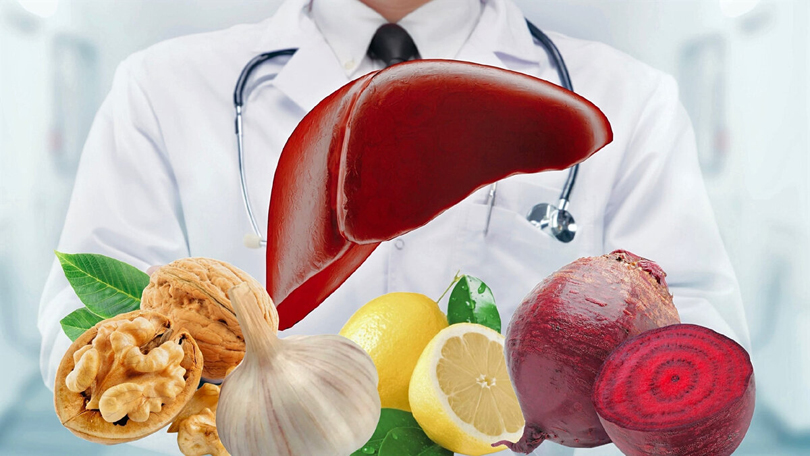The human body is a self-cleansing system. One of the main organs responsible for neutralizing toxic substances is the liver. However, often due to lifestyle factors, this organ struggles to perform its functions effectively. This is when detox therapy is needed to improve well-being and strengthen immunity. Dr. Zuhra Galimova, chief physician at Smart Health Clinic , shared with us the signals of malfunction in the body that should not be ignored

The liver is responsible for a multitude of processes, from metabolism to detoxifying all toxins, hormones, and metabolic products. Our vitality and health depend on its function.
The liver is involved in protein synthesis (albumins, globulins, blood clotting factors). Pathology in the liver can lead to decreased protein levels and disruption of the blood clotting system. Additionally, the liver synthesizes fats, including cholesterol. Elevated cholesterol levels often indicate liver issues, as 70% of synthesized cholesterol is done by the liver (with only 30% coming from food). The liver also synthesizes triglycerides, phospholipids, and aids in carbohydrate metabolism.
Liver function also includes neutralizing hormones and neurotransmitters, as well as bile synthesis. Hormones are fat-soluble substances that undergo detoxification reactions (detoxification phases) in the liver to become water-soluble before being excreted. Bile acids then transport them to the gallbladder. Contraction of the gallbladder releases bile into the intestine, aiding in nutrient absorption and protecting the intestines from bacterial overgrowth.
The liver’s detoxification capacity is crucial, yet it often operates silently until irreversible conditions like cirrhosis (where liver tissue is replaced by fibrous tissue) or cancer develop. However, there are warning signs indicating liver dysfunction that should not be ignored.
Obesity, particularly abdominal fat accumulation (visceral obesity), is often linked to non-alcoholic fatty liver disease in 60-100% of cases. Patients with a BMI over 30, waist circumference over 80 cm, and insulin resistance are likely to have fatty liver disease.
Visible signs of liver dysfunction include:
- Xanthomas and xanthelasmas—benign skin growths that are yellow-white and have a pasty consistency.
- Telangiectasias—spider veins on the skin, red palms, and spider angiomas.
- Milia—small, hard cysts on the skin’s surface, caused by blocked oil glands due to impaired bile flow.
- Pigmented spots on the body and face.
- Yellowing of the skin and sclera, often accompanied by itching and flaking (due to bilirubin metabolism and bile flow disruption).
Symptoms indicating liver congestion:
- Fatigue and weakness, inability to maintain work pace.
- Loss of appetite, weight loss: metabolic disturbances.
- Gastrointestinal disturbances: pale stools, abdominal pain, constipation, diarrhea, heartburn, and other stomach issues.
- Sleep disturbances: insomnia, restlessness, nervousness, and irritability.
- Dandruff and itchy skin: liver struggles to detoxify toxins.
- Muscle and joint pain.

The liver is not only the most important detoxification organ but also the most modest. Viral hepatitis, alcoholic steatosis, and non-alcoholic fatty liver disease can progress asymptomatically until irreversible liver damage such as cirrhosis or cancer occurs. However, recognizing early signs of liver dysfunction is crucial to prevent severe complications.
Дiagnostics for Liver Dysfunction
When the body signals trouble, it’s crucial to conduct diagnostics to assess liver function. Key indicators include ALT, AST, alkaline phosphatase, and GGT levels. These enzymes, found within liver cells, elevate when these cells are damaged or destroyed.
Abdominal ultrasound (US) is essential for evaluating liver size, detecting fatty liver disease, significant fibrosis, hemangiomas, and other pathological structures or formations within the liver.
Equally important is testing for hepatitis B and C viruses in blood. Hepatitis B often presents with clinical symptoms such as fever, toxicity, and jaundice. In contrast, hepatitis C is notoriously asymptomatic, earning it the nickname “silent killer.” Hepatitis C is often diagnosed only when cirrhosis or liver cancer is detected.

Therefore, pay attention to your body’s signals and assist in its detoxification process promptly!
And if you still need professional help when the body cannot cope with the elimination of toxins on its own, auxiliary methods that activate natural processes come to the rescue.
Artificial (medical) detoxification is the observance of a diet, the addition of special products or medicines to the diet, with the help of which the doctor compensates for the diagnosed deficiency of vitamins and trace elements. In addition, medical detoxification includes procedures that help the body improve performance and get rid of harmful substances.
The methods included in the Detox program are aimed at maintaining the natural mechanisms of detoxification of the body. By restoring the normal functioning of organs and systems, we restore the body’s ability to neutralize and remove harmful substances from the body.
Proper detoxification helps to achieve several goals:
- it supports and improves your liver function. Liver is the main filter that neutralizes and disposes of metabolic products, drug residues, heavy metals, exhaust gases, resins, pesticides;
- it improves the outflow of bile, which is involved in the digestion of fats, helps the body to absorb vitamins and regulates the work of the intestine;
- it normalizes intestinal motility to reduce the amount of toxins and decay products formed;
- it supports kidney function for uninterrupted excretion of toxins in the urine.
Photo: from open sources
















